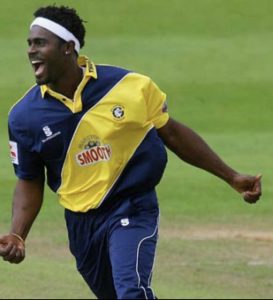Diversity within the Sport that Saves Lives
Water is incapable of prejudice, yet swimming comes with plenty of cultural and social history, accessibility issues and misconceptions, which has lead to generations of families unable to swim, many living with a phobia of water. The Sport that Saves Lives should and must strive to be diverse, inclusive and accessible for all.
Statistics from the Black Swimming Association show that in England (2020):
- 95% of Black adults and 80% of Black children do not swim.
- The risk of drowning being higher among “minority ethnic” communities.
- 1 in 4 children in leave primary school unable to swim.
Throughout aquatics people of colour and ethnic minority communities are consistently precluded. These barriers are often entrenched and complex, which often leaves these communities without the necessary education in water safety and drowning prevention.- The Black Swimming Association
Swimming is an important life skill for ALL yet even within the independent sector, in a school with it’s own pool we still see the racial and cultural disparities that exist in swimming.
Having shared my swimming knowledge with my PE colleagues these past 10 years I am proud that we have seen the attainment gap narrow dramatically with many competent swimmers across all ethnic groups and we celebrate a growing number of Black and Asian swimmers taking swimming to competitive standards and shine brightly as some of our fastest swimmers.
The Bancroft’s PE Department share a common goal, that ‘Sport is for All’ and that within our diverse school population ALL pupils have the opportunity to thrive.
This year Carl has taken a passionate lead on the diversity and inclusion within school and shares his experience of swimming both as teacher and a swimmer.
When we listen and celebrate what is both common and different about our experiences, we become wiser, more inclusive, better.
My name is Carl Greenidge, ex professional cricketer and Head of Cricket and P.E teacher at Bancroft’s school in Woodford Green, Essex.
Like most of us, the events during lockdown sparked by the killing George Floyd’s in America and the subsequent Black Lives Matter movement prompted me to be more active in raising awareness on the issues of inequality in society. After hearing about incidents, which took place right under my nose at school, I wrote a passionate email to the headmaster in a plea for some perspective on the burning issues that everyone was facing. We have since set up a number of groups within the school faculty to tackle the topic of diversity and inclusion with staff and students alike in a bid to making Bancroft’s an anti-racist and diverse school.

In England 95% of Black adults and 80% of black children do not swim and the risk of drowning is higher among ethnic minority communities. What do you feel are the barriers for the black community? What unique issues are there? What is your experience as a swimmer?
My experiences as a swimmer are interesting. I was taught how to swim from a young age and was a competent and confident swimmer by the age of 8/9. I now know that for my generation of black individuals that this is not commonplace, but only became aware after I trusted and assumed that a friend of mine could also swim and got into difficulties in a pool when we went for what I thought was going to be a bit of fun when I was 10/11 years old. I quickly realised that swimming wasn’t a skill that everybody had acquired. I spent most of my adolescence in Barbados and loved the water, my friends did too but not everyone dared venture out as far as I would go and preferred to wade in the shallow water for obvious reasons. My belief is that as human beings, there is a natural fear of the unknown, but for Black people, on top of this, there is also the extra desire to not put yourself at potential and/or unnecessary risk. Navigating your way through life is challenging enough for most Black people so swimming is often seen as an unnecessary risk when weighed up against the perception of more valuable life skills. I do believe however that this is slowly changing through more and more exposure and opportunities for BAME people in recent times.”
Since we’ve been working together what have you learnt about the priorities of learning to swim. How has this helped you as a PE teacher?
“As mentioned before, I knew about the importance of learning to swim from a fairly early age. Since teaching it at Bancroft’s it has reinforced the value as a genuine life skill. Very few people will go through their entire life never having to or wanting to go into a body of water of any sort. It could be as serious as learning life-saving skills or rehabilitation, or it could be totally recreational; water is a part of our lives whether we like it or not.”
What pupil progress/outcomes have you experienced in the pool?
“There has been significant pupil progress in the water since we switched to the Total Immersion techniques of swimming at Bancroft’s. You can be taught how to swim and survive, but using science and understanding how you can use your body to be an efficient hydro-dynamic vehicle is a totally different way of negotiating the water. I have seen students overcome their fear of the water, I have also seen students who have never had any experience absolutely thrive and continue to get into the pool long after it was on their curriculum as a year group. Over time I believe anyone can learn to not just survive but love the water.”
Within the school swimming programme our goal is to foster equal opportunity, diversity, inclusion and participation for BAME pupils. Do you see this?
Swimming is for all. At our school there is no perception of hierarchy in skill acquisition within any of our sports departments.
Swimming lessons are representative of the school community. What do you see? Does any one group of children stand out as being more able than the other?
As a snapshot, it does appear that white students tend to stand out as better swimmers. I will add that this is not due to ability but more of a cultural issue as well as exposure to swimming and swimming practice as mentioned earlier.
The methods by which swimming is taught can further compound fears and phobias.
The first steps in learning to swim have to be trust and understanding.
An understanding of how your body floats and moves through water and trust that the water will support you, even help you move.
When you feel calm and in control, this gives you the emotional freedom to learn how to swim and allows swimmers to flourish and grow in confidence.
